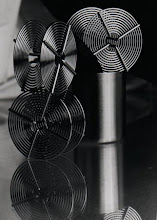
Orange Mushrooms, Savage Gulf SNA.
by John O'Keefe-Odom

On the trail to Greeter Falls, in Savage Gulf State Natural Area, I found a wide variety of mushrooms in the forest. The slideshows below include at least 24 different examples of mushrooms and fungi near Greeter Creek.
While I haven't yet been able to identify all of them, you can see that they are different in size, shape and color. They varied in height from about one to seven inches tall.
It was very unusual to find so many kinds of mushrooms in one area in one day. Many of these mushrooms may be poisonous. Plants in Savage Gulf SNA are protected by law.




Greeter Falls, Savage Gulf State Natural Area, Tennessee
Click on the picture to play.
An Autoviewer Slideshow featuring the
mushrooms near Greeter Creek
Click on the picture to play.
Autoviewer Slideshow, Part II.

A small red-capped mushroom pushes its way up through the litter on the forest floor.
An Eastern Tiger Swallowtail, Papilio Glaucus (male),
butterfly with a damaged wing rests on a leaf in the forest.

These two kinds of spiders are commonly found as a pair
on rocks in the streams of Greeter Creek.
I think these spiders are Dolomedes Tenebrosus, the Dark Fishing Spider. I think the small, light colored one is the male, and the darker, larger one is the female.
I have seen these spiders move across the water's surface. They bounce their abdomen up and down, but skim with the tips of their legs on the water's surface tension, much like a water skimmer. They can move very fast this way, faster than I've seen them crawl on the rocks.
These spiders will typically either sit still, or scramble to hide under a stone.
These spiders are large. I have seen them about three, almost four inches across. The spiders have a span about the size of a short chord across the palm of a hand.
If they are D. Tenebrosus, then they are poisonous; the fangs of the female are capable of penetrating human skin.
I see several of these a day in and around the waters of Greeter Creek, where I swim to make photos of fish. These spiders are noted to eat whatever is available, including insects and very small fish.
Let's hope they don't snack on photographers!
One pair of these spiders live under a rock about two meters away from where I was in the water when I made the photo below a few weeks ago. This rock would be just out of frame, to the viewer's right. At the time, I had no idea the spiders were a hazard; but, I think it is unlikely that they will be a problem.

Fish in Greeter Creek at my favorite "aquarium" spot.
Sunlight on rocks, Greeter Creek.
# # #










No comments:
Post a Comment